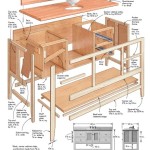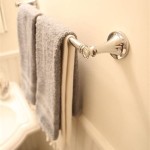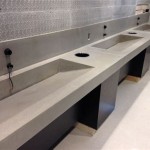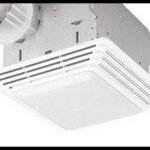How To Remove Grout From Bathroom Wall Tiles
Removing grout from bathroom wall tiles may become necessary for various reasons, including replacing damaged tiles, re-grouting to address water damage or staining, or updating the aesthetic appearance of the bathroom. Successfully removing grout requires careful planning, the right tools, and a methodical approach to avoid damaging the tiles. This article provides a comprehensive guide on how to remove grout from bathroom wall tiles safely and effectively.
Preparing for Grout Removal
Before beginning the grout removal process, adequate preparation is crucial. This involves gathering the necessary tools and materials, protecting the work area, and understanding the type of grout being removed. Lack of preparation can lead to inefficient work, potential damage to the tiles, and unnecessary mess.
The first step is to assemble the required tools and materials. The following items are commonly used for grout removal:
*Grout Removal Tool:
Several types of grout removal tools are available, including manual grout saws, oscillating multi-tools with grout removal attachments, and power grout removal tools. The choice depends on the size of the area, the type of grout, and personal preference. Manual grout saws are suitable for smaller areas and intricate work, while oscillating multi-tools and power tools are more efficient for larger surfaces. *Utility Knife:
A utility knife can be useful for scoring the grout lines before using a grout removal tool. This helps to prevent chipping and ensures a cleaner removal. *Shop Vacuum or Vacuum Cleaner:
A vacuum cleaner is essential for removing dust and debris created during the grout removal process. This helps to maintain visibility and prevents the dust from spreading throughout the bathroom. *Safety Glasses:
Eye protection is paramount to prevent grout particles from entering the eyes. Safety glasses should be worn at all times during the grout removal process. *Dust Mask:
A dust mask or respirator protects the respiratory system from inhaling grout dust, which can be irritating and potentially harmful. *Gloves:
Gloves protect hands from sharp tools and potential skin irritation from prolonged exposure to grout dust. *Small Brush:
A small brush, such as a toothbrush or scrub brush, is useful for cleaning debris from the grout lines. *Painter's Tape:
Painter's tape can be used to protect adjacent surfaces, such as the bathtub or countertop, from scratches and damage during grout removal. *Screwdriver/Chisel:
A small screwdriver or chisel may be needed for removing stubborn pieces of grout or for working in tight corners. *Hammer (Optional):
A hammer may be used in conjunction with the chisel for more forceful grout removal in specific situations, but caution is required to avoid damaging the tiles.Once the tools and materials have been gathered, the work area should be properly prepared. This involves:
*Protecting Surfaces:
Cover the floor and any nearby surfaces with drop cloths or plastic sheeting to protect them from dust and debris. *Ventilation:
Ensure adequate ventilation by opening windows or using a fan to circulate air. This helps to reduce the amount of dust in the air. *Cleaning:
Clean the tiles and grout lines with a damp cloth or sponge to remove any loose dirt or debris. This makes it easier to see the grout lines and facilitates the removal process.Understanding the type of grout being removed is essential for choosing the appropriate removal method. Common types of grout include:
*Cement-Based Grout:
This is the most common type of grout and is typically used in bathrooms and kitchens. Cement-based grout is relatively porous and can be prone to staining. *Epoxy Grout:
Epoxy grout is more durable and water-resistant than cement-based grout. It is also more resistant to staining. Epoxy grout is often used in high-moisture areas and is more difficult to remove than cement-based grout. *Sanded Grout:
Sanded grout contains sand particles, which provide added strength and prevent cracking in wider grout lines. *Unsanded Grout:
Unsanded grout does not contain sand and is typically used for narrow grout lines.Distinguishing between these grout types can influence the choice of tools and techniques used for removal. Epoxy grout generally requires stronger tools and more effort to remove than cement-based grout.
Methods for Removing Grout
Several methods can be used to remove grout from bathroom wall tiles, each with its own advantages and disadvantages. The choice of method depends on the type of grout, the size of the area, and the desired level of precision. The following are common methods for grout removal:
*Manual Grout Saw:
A manual grout saw is a hand-held tool with a serrated blade that is used to scrape away the grout. This method is suitable for small areas and intricate work. The process involves carefully running the grout saw along the grout lines, applying gentle pressure to avoid damaging the tiles. It is important to maintain a consistent angle and avoid pressing too hard, which can scratch the tiles. Manual grout saws offer good control and precision, but they can be time-consuming for larger areas. *Oscillating Multi-Tool with Grout Removal Attachment:
An oscillating multi-tool with a grout removal attachment is a power tool that uses rapid oscillations to remove grout. This method is more efficient than using a manual grout saw, particularly for larger areas. The grout removal attachment typically has a triangular or segmented blade that is designed to fit into the grout lines. The tool is moved along the grout lines, allowing the oscillating blade to grind away the grout. It is important to use the tool at a moderate speed and to avoid applying excessive pressure, which can damage the tiles. Some oscillating multi-tools come with adjustable depth settings, which can help to control the amount of grout being removed. *Power Grout Removal Tool:
A power grout removal tool is specifically designed for removing grout. These tools typically have a rotating blade or brush that grinds away the grout. Power grout removal tools are very efficient, but they can also be more aggressive than other methods. It is important to use these tools with caution and to follow the manufacturer's instructions carefully. Start with a low speed setting and gradually increase the speed as needed. Avoid applying too much pressure, which can overheat the blade and damage the tiles. *Utility Knife:
A utility knife can be used to score the grout lines before using a grout removal tool. This helps to create a cleaner cut and prevents chipping. The utility knife is run along the grout lines, applying gentle pressure to score the surface of the grout. This is particularly useful for hard or brittle grout. *Chemical Grout Softeners:
Chemical grout softeners can be used to soften the grout before attempting to remove it. These products are typically applied to the grout lines and allowed to sit for a specified period of time. The chemicals penetrate the grout, making it easier to remove. It is important to follow the manufacturer's instructions carefully and to wear appropriate protective gear, such as gloves and safety glasses. Chemical grout softeners can be effective for removing stubborn grout, but they can also be harsh and may damage certain types of tiles. It is important to test the product in an inconspicuous area before applying it to the entire surface. *Steam Cleaning:
Steam cleaners can be used to soften and loosen grout before removing it. The steam penetrates the grout lines, breaking down the bonds between the grout and the tiles. This method is particularly effective for removing dirt, grime, and mildew from grout. After steaming the grout lines, a grout removal tool can be used to scrape away the softened grout. *Chisel and Hammer:
In some cases, a chisel and hammer may be necessary to remove stubborn pieces of grout. This method should be used with extreme caution to avoid damaging the tiles. The chisel is placed at an angle to the grout line, and the hammer is used to gently tap the chisel. The goal is to break the grout into smaller pieces that can be easily removed.Regardless of the method used, it is important to work slowly and carefully, taking frequent breaks to avoid fatigue. Regular cleaning with a vacuum cleaner or shop vacuum is essential to maintain visibility and prevent the spread of dust.
Post-Removal Procedures
Once the grout has been removed, it is important to clean the area thoroughly and prepare it for re-grouting or other necessary repairs. This involves removing any remaining grout particles, cleaning the tiles, and inspecting for any damage.
After the bulk of the grout has been removed, there will likely be some small particles remaining in the grout lines. These particles can be removed using a small brush or a utility knife. A shop vacuum or vacuum cleaner should be used to remove any dust or debris that is created during this process.
The tiles should be thoroughly cleaned with a damp cloth or sponge to remove any remaining grout residue. A mild detergent can be used to help remove stubborn dirt or grime. It is important to rinse the tiles thoroughly with clean water to remove any soap residue.
The tiles should be carefully inspected for any cracks, chips, or other damage that may have occurred during the grout removal process. Any damaged tiles should be replaced before re-grouting. If the subfloor is damaged, it should be repaired before installing new tiles.
If re-grouting is planned, the grout lines should be prepped by lightly dampening them with a sponge. This helps the new grout adhere properly to the tiles. Choosing the right type of grout for the specific application is crucial for ensuring long-lasting results. Consider factors such as moisture resistance, durability, and color when selecting grout.
If re-grouting is not planned, the grout lines can be filled with a sealant to prevent water damage. A sealant can also help to protect the edges of the tiles from chipping or cracking. Apply the sealant carefully and allow it to dry completely before using the shower or tub.

How To Clean Mold In Shower Grout Tips And Tricks Certified Care

How To Remove Grout In 5 Easy Steps L Victorian Plumbing

How To Regrout Bathroom Tile In 5 Easy Steps True Value

Easy Diy Guide On Removing Tiles From Walls Fantastic Handyman Au

How To Regrout Bathroom Tile Fixing Walls Diy Family Handyman

What Is The Best Way To Remove Grout And Regrout Tile

Can I Put New Grout Over My Old The Medic

How To Clean Grout Cleaning Stains

How To Remove Old Grout

How To Clean Bathroom Tile And Grout Reviews By Wirecutter
Related Posts







